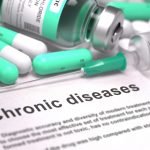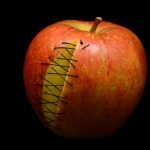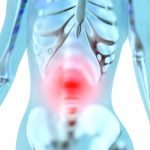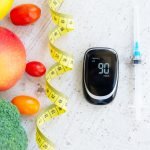CBD for Mental Health
Vis Medicatrix Naturae
Peter Bongiorno, ND, LAc
Cannabidiol (CBD) oil is probably the oldest “new” supplement that is out there. Many of my patients have expressed both interest and concern about it. Besides wondering if it is the new wonder cure for their condition, they are concerned about its legality, its safety, and whether it could get them into some sort of trouble.
History & Lineage of Cannabis
Both marijuana and hemp plants are types of Cannabis plants. The medical benefits of Cannabis were probably first recorded around 2900 BC in the Chinese Medicine tradition. Historically, the plant has been a part of many cultures and nations, including the Jewish tradition, ancient Egypt, the Greek medical tradition, India, and Persia.
In 1762, Cannabis was mandated in the colony of Virginia for farmers to grow hemp, as it was a strong plant that had many uses, such as the manufacture of rope and clothing. In 1851, the United States Pharmacopeia (USP) recognized Cannabis, in the form of marijuana, as a useful medication. From the mid-1800s through the 1940s, Cannabis populated most pharmacies, to be used for a plethora of conditions, including epilepsy, migraines, and pain. The advent of medications like phenytoin, along with the oppression of natural medicine education by the American Medical Association and the Flexner Report1 in the early 1900s, contributed to the burial of documentation supporting the use of Cannabis – a suppression that lasted throughout the 1900s. During World War II, the popular phrase “hemp for victory” caught on, for hemp had a multitude of industrial uses (although medicine was not one of them). Years later, hemp found its demise when synthetic nylon made it obsolete. Only recently, as states are becoming legal for marijuana use, has interest in the use of hemp for CBD become more common.
What CBD Oil Is Not
Some patients tell me, “I am not interested in CBD oil. I’m not interested in taking marijuana and feeling drugged all the time.” As mentioned, Cannabis refers to 2 plants: marijuana and hemp. Although CBD, like other cannabinoids, is found in all Cannabis plants (ie, both hemp and marijuana), commercial CBD oil for supplemental use derives only from the hemp plant. Although marijuana and hemp are close cousins, supplemental CBD from hemp must contain less than 0.3% tetrahydrocannabinol (THC). THC is the psychoactive component of marijuana, the chemical that creates a euphoric “high.” THC can also impair memory and coordination, increase a person’s appetite, and contribute to paranoia in some people.
If your patient wants to take CBD oil to feel “high,” he or she will be disappointed. But, if your patient is looking to improve mental health, the research I discuss in this article suggests that CBD oil might be a good choice. As a side note, hemp seeds and hemp oil, although very nutritive, contain no CBD and will therefore have no direct therapeutic effect on mental health. Any product labeled “CBD” is sourced from hemp leaves and other plant parts.
How CBD Oil Works
Like bioflavonoids, CBD is a chemical the plant makes for its own protection. CBD oil contains natural phytocannabinoids, which are fats that bind to cannabinoid receptors in both the brain and the nervous system throughout the body. Cannabinoid receptors have been found both in the central nervous system (CB1 receptors) and throughout the body (CB2 receptors) including on cells of the immune system.2 Cannabinoids send signals to the body to calm the stress response, lower inflammation, and even reduce pain.
Endocannabinoids are the feel-good molecules our bodies naturally secrete when we feel safe or are doing something we love to do. Endocannabinoids are even found in breast milk, and are produced by the mother that is ready to feed her baby.3 These natural endocannabinoids will calm the baby’s system as it responds to the new world it is trying to understand (just another reason to support breastfeeding). CBD is a plant cannabinoid that appears to support our natural endocannabinoid system. While CBD has extremely low affinity for CB1 and CB2 receptors, it enhances the actions of the endocannabinoid, anandamide, by inhibiting its degradation.4 It may also affect function of adenosine receptors, which play a role in cardiac arrhythmias and wakefulness.5 CBD may bind to serotonin receptors.6 It also affects vallinoid receptors, which regulate inflammation and pain7 and will bind to nuclear peroxisome proliferator-activated receptors (PPARs), which play a strong role in areas such as energy, insulin regulation, metabolism, and proliferative mechanisms.8
CBD Clinical Research
CBD oil has been studied for a wide variety of health issues. Most of the research has been conducted using cell lines and animal models. Cell research, for example, has demonstrated a protective effect of CBD on the endothelial linings of coronary arteries in hyperglycemic models, where it was shown to attenuate various inflammatory responses to high glucose.4 Animal studies have revealed CBD’s ability to protect beta cells of the pancreas, as well as to protect the eyes from diabetic retinopathy due to hyperglycemia.9 In other animal models, topical CBD has been shown to reduce pain.10 CBD has been shown in rat studies to prevent weight gain,11 and shown in human subjects taking marijuana to suppress brain appetite centers and lower food cravings.12 CBD has also modulated thermogenic dynamics by favoring conversion of white fat to brown fat.13 There is also animal research suggesting benefits in arthritis.14 Another animal study suggests that CBD may also have applications in reducing nausea and vomiting, due to its ability to agonize 5-hydroxytryptamine receptors.15
Recent human clinical trials indicate that CBD may have a significant anticonvulsant effect. For example, CBD was found to reduce seizure frequency and increase quality of life in pediatric patients suffering from treatment-resistant epilepsy.16 A testament to its efficacy, in June 2018 the FDA approved the drug Epidiolex (an oral cannabidiol) for 2 types of epilepsy.17 This includes patients 2 years and older, suggesting its safety for kids as well as adults. Recent studies suggest that CBD may not only help in palliative care, but also possibly function as an anti-cancer agent via direct anti-proliferative actions.18
Anxiety
A growing body of significant research suggests CBD oil can function as a strong component of a natural plan to alleviate anxiety. Strong preclinical evidence suggests positive mental health benefits of CBD oil that include decreased feelings of social isolation, improved autistic tendencies, and a lessening of posttraumatic stress disorder (PTSD) symptoms.19 Some of the first studies examining CBD’s possible anxiolytic benefit evaluated its ability to decrease the anxiety-producing effects of THC when patients smoke marijuana. Subsequent studies have looked more closely at this and found that CBD not only inhibits THC’s anxiety effects, but also protects the hippocampus (a central brain region for emotion and memory) from long-term THC-induced neurotoxicity.20 In a small human trial, CBD significantly reduced the social anxiety associated with a simulated public speaking test in healthy subjects.21 CBD was found to affect the amygdala (fear center) and hippocampus (memory and emotion) areas of the limbic system – an effect that was considered comparable to the anxiety medications, ipsapirone and diazepam.
Psychosis
This category of mental health disorders includes both schizophrenia and bipolar disorder, and represents the most challenging type of mental health disorder that a clinician can face. Interestingly, marijuana (containing THC) can induce psychosis, thus is not recommended for those at risk of psychosis.22 Patients who are prone to schizophrenia are more vulnerable to psychotic breaks under the influence of marijuana.23 CBD has been shown helpful to significantly minimize this effect.24
A 2012 double-blind, randomized clinical trial examined the potential benefits of CBD for psychosis in schizophrenics.25 In this study, 40 patients were given either 800 mg of CBD or an antipsychotic. Both treatments improved patient symptoms, with no significant differences in effectiveness. The CBD group, however, enjoyed significantly fewer side effects commonly associated with antipsychotic medications, such as motor issues, hormonal fluctuations, and weight gain.25
In 2018, the American Journal of Psychiatry published a study that enlisted 88 schizophrenic patients with psychotic tendencies who were prescribed, alongside their existing antipsychotic medication, either 1000 mg CBD or placebo.26 After 42 days, the CBD group showed minor improvements in cognitive performance (though not statistically significant) as well as significantly fewer psychosis symptoms (such as hallucinations, delusions, and paranoia).26 The authors of this article suggested that because CBD did not appear to blunt dopamine’s action (one of the main mechanisms of antipsychotic drugs), it may qualify as a new class of treatment for schizophrenia. The study’s lead author, Dr Philip McGuire, was interviewed by the website Herb.co, and said the following:
[I]f trials of CBD as a monotherapy are positive, it would be reasonable to consider using it alone, particularly in patients in whom antipsychotic medication hadn’t worked.27
Safety of CBD Oil
It has been shown that CBD is very well tolerated and does not have psychoactive effects.28 A major concern of drugs that calm or block pain is that these can often suppress the breathing centers in the brain stem. This is the common fatal effect that occurs in deaths from opioid medications. Since cannabinoids do not affect this part of the brain, this is not a concern for CBD oil (or for marijuana).
Since the 1960s, data have been collected regarding the safety of CBD oil. While dosing seems to vary greatly from clinical study to clinical study, a typical dosing I have gleaned and prescribe to my patients is usually in the range of 10-100 mg per day. At this dosing, CBD has been shown to have no side effects or toxicity. One small study of 3 schizophrenic patients who took up to 1280 mg/day of CBD over 4 weeks experienced no adverse effects.29 The studies cited above examining patients with psychosis also did not note any major side effects. While the FDA still considers CBD oil to have no medicinal value, the World Health Organization’s Expert Committee on Drug Dependence recently detailed a variety of conditions that may benefit from its use.30
CBD & Marijuana Drug Tests
The urine test for marijuana looks for THC’s main metabolic byproduct (ie, 11-nor-delta9-caboxy-THC). Since CBD contains essentially no THC, there is supposedly little to no chance it will produce a positive drug test. Furthermore, the standard follow-up verification screen, (a gas chromatography/mass spectrometry test), is too specific to measure components from CBD as positive.31
Of course, if CBD is not manufactured as required from the lowest-THC varieties of hemp, then there could be an issue. There are companies that verify CBD as 100% THC-free. To be safe, it may be best to discuss this with your patient, especially if he or she is taking a CBD manufactured by a company you cannot verify for strict quality control.
Politics of CBD Labeling
From what nutraceutical company representatives have told me, it sounds like the newly approved CBD-based drug for epilepsy may change the nutraceutical game regarding CBD. The powers at large may try to regulate CBD as a drug and remove from the market. Some companies are now choosing to sell “hemp” oil, and remove dosages of CBD from the label, which of course is not ideal for either practitioner or patient, both of whom need this information when using CBD therapeutically. Quietly, the Food and Drug Branch (FDB) of the California Department of Public Health released a fact sheet in July 2018, effectively banning hemp-derived CBD,32 and other states are moving to regulate CBD like marijuana. Although not really enforced yet, the stage is set to effectively stop over-the-counter sales. While this seems absurd, remember what happened with red yeast rice, when it was banned in 1998 by the FDA.
Conclusion
When treating mental health naturopathically, a comprehensive approach involves treating the whole person by addressing sleep, exercise, stressors, spirit, foods, hormonal imbalance, blood sugar dysregulation, genetic susceptibilities, and nutrient deficiencies, etc. In my practice, I have been using CBD successfully over the past few years with this approach, especially to help calm the stress response, support digestive function, and calm inflammation. I have seen that CBD as a monotherapy has significant value. As part of a comprehensive naturopathic approach, CBD will be a valuable tool that can help catalyze the tipping point your patients are looking for to feel better. Please also stay aware of the emerging politics surrounding CBD in order to maintain its accessibility and to make sure your practice does not suffer from any legal ramifications.
References:
- Duffy TP. The Flexner Report―100 Years Later. Yale J Biol Med. 2011;84(3):269-276.
- Croxford JL, Yamamura T. Cannabinoids and the immune system: potential for the treatment of inflammatory diseases? J Neuroimmunol. 2005;166(1-2):3-18.
- Di Marzo V, Sepe N, De Petrocellis L, et al. Trick or treat from food endocannabinoids? Nature. 1998;396(6712):636-637.
- Rajesh M, Mukhopadhyay P, Bátkai S, et al. Cannabidiol attenuates high glucose-induced endothelial cell inflammatory response and barrier disruption. Am J Physiol Heart Circ Physiol. 2007;293(1):H610-H619.
- Gonca E, Darıcı F. The effect of cannabidiol on ischemia/reperfusion-induced ventricular arrhythmias: the role of adenosine A1 receptors. J Cardiovasc Pharmacol Ther. 2015;20(1):76-83.
- Ibeas Bih C, Chen T, Nunn AV, et al. Molecular Targets of Cannabidiol in Neurological Disorders. Neurotherapeutics. 2015;12(4):699-730.
- Costa B, Giagnoni G, Franke C, et al. Vanilloid TRPV1 receptor mediates the antihyperalgesic effect of the nonpsychoactive cannabinoid, cannabidiol, in a rat model of acute inflammation. Br J Pharmacol. 2004;143(2):247-250.
- O’Sullivan SE. An update on PPAR activation by cannabinoids.Br J Pharmacol. 2016;173(12):1899-1910.
- El-Remessy AB, Al-Shabrawey M, Khalifa Y, et al. Neuroprotective and blood-retinal barrier-preserving effects of cannabidiol in experimental diabetes. Am J Pathol. 2006;168(1):235-244.
- Hammel DC, Zhang LP, Ma F, et al. Transdermal cannabidiol reduces inflammation and pain-related behaviours in a rat model of arthritis. Eur J Pain. 2016;20(6):936-948.
- Ignatowska-Jankowska B, Jankowski MM, Swiergiel AH. Cannabidiol decreases body weight gain in rats: involvement of CB2 receptors. Neurosci Lett. 2011;490(1):82-84.
- Morgan CJ, Freeman TP, Schafer GL, Curran HV. Cannabidiol attenuates the appetitive effects of Delta 9-tetrahydrocannabinol in humans smoking their chosen cannabis. Neuropsychopharmacology. 2010;35(9):1879-1885.
- Parray HA, Yun JW. Cannabidiol promotes browning in 3T3-L1 adipocytes. Mol Cell Biochem. 2016;416(1-2):131-139.
- Zurier RB, Rossetti RG, Burstein SH, Bidinger B. Suppression of human monocyte interleukin-1beta production by ajulemic acid, a nonpsychoactive cannabinoid. Biochem Pharmacol. 2003;65(4):649-655.
- Rock EM, Bolognini D, Limebeer CL, et al. Cannabidiol, a non-psychotropic component of cannabis, attenuates vomiting and nausea-like behaviour via indirect agonism of 5-HT(1A) somatodendritic autoreceptors in the dorsal raphe nucleus. Br J Pharmacol. 2012;165(8):2620-2634.
- Perucca E. Cannabinoids in the Treatment of Epilepsy: Hard Evidence at Last? J Epilepsy Res. 2017;7(2):61-76.
- S. Food and Drug Administration. FDA approves first drug comprised of an active ingredient derived from marijuana to treat rare, severe forms of epilepsy. June 25, 2018. FDA Web site. https://www.fda.gov/newsevents/newsroom/pressannouncements/ucm611046.htm. Accessed August 13, 2018.
- Chakravarti B, Ravi J, Ganju RK. Cannabinoids as therapeutic agents in cancer: current status and future implications. Oncotarget. 2014;5(15):5852-5872.
- Blessing EM, Steenkamp MM, Manzanares J, Marmar CR. Cannabidiol as a Potential Treatment for Anxiety Disorders. Neurotherapeutics. 2015;12(4):825-836.
- Beale C, Broyd SJ, Chye Y, et al. Prolonged Cannabidiol Treatment Effects on Hippocampal Subfield Volumes in Current Cannabis Users. Cannabis Cannabinoid Res. 2018;3(1):94-107.
- Crippa JA, Derenusson GN, Ferrari TB, et al. Neural basis of anxiolytic effects of cannabidiol (CBD) in generalized social anxiety disorder: a preliminary report. J Psychopharmacol. 2011;25(1):121-130.
- Radhakrishnan R, Wilkinson ST, D’Souza DC. Gone to Pot – A Review of the Association between Cannabis and Psychosis. Front Psychiatry. 2014;5:54.
- Hall W, Degenhardt L. Cannabis use and the risk of developing a psychotic disorder. World Psychiatry. 2008;7(2):68-71.
- Hahn B. The Potential of Cannabidiol Treatment for Cannabis Users With Recent-Onset Psychosis. Schizophr Bull. 2018;44(1):46-53.
- Leweke FM, Piomelli D, Pahlisch F, et al. Cannabidiol enhances anandamide signaling and alleviates psychotic symptoms of schizophrenia. Transl Psychiatry. 2012;2:e94
- McGuire P, Robson P, Cubala WJ, et al. Cannabidiol (CBD) as an Adjunctive Therapy in Schizophrenia: A Multicenter Randomized Controlled Trial. Am J Psychiatry. 2018;175(3):225-231.
- Hoffman R. CBD treats paranoia and hallucinations, research finds. December 21, 2017. Herb.co Web site. https://herb.co/marijuana/news/cbd-psychosis-schizophrenia. Accessed May 22, 2018.
- Martin-Santos R, Crippa JA, Batalla A, et al. Acute effects of a single, oral dose of d9-tetrahydrocannabinol (THC) and cannabidiol (CBD) administration in healthy volunteers. Curr Pharm Des. 2012;18(32):4966-4979.
- Zuardi AW, Hallak JE, Dursun SM, et al. Cannabidiol monotherapy for treatment-resistant schizophrenia. J Psychopharmacol. 2006;20(5):683-686.
- World Health Organization. Cannabidiol (CBD): Critical Review Report. Expert Committee on Drug Dependence; Fortieth Meeting; Geneva, 4-7 June 2018. Available at: http://www.who.int/medicines/access/controlled-substances/CannabidiolCriticalReview.pdf. Accessed August 13, 2018.
- Dasgupta A. Chapter 10. Laboratory methods for measuring drugs of abuse in urine. In: Alcohol, Drugs, Genes and the Clinical Laboratory: An Overview for Healthcare and Safety Professionals. Amsterdam, Netherlands: Elsevier/Academic Press; 2017:167-191.
- California Dept of Public Health. FAQ – Industrial Hemp and Cannabidiol (CBD) in Food Products. Revised July 6, 2018. CDPH Web site. https://tinyurl.com/yclxpbht. Accessed August 13, 2018.
 Peter Bongiorno, ND, LAc, is the immediate past-president and board member of the New York Association of Naturopathic Physicians. Dr Bongiorno authored the book, How Come They’re Happy and I’m Not?: The Complete Natural Guide to Healing Depression for Good (Red Wheel); and the practitioner guide, Holistic Therapies for Anxiety and Depression (WW Norton). His newest book is Put Anxiety Behind You: The Complete Drug-Free Program. Visit drpeterbongiorno.com, InnerSourceHealth.com, and www.3UNeed.com, and join him on Facebook and Twitter @drbongiorno for updates on naturopathic mental health.
Peter Bongiorno, ND, LAc, is the immediate past-president and board member of the New York Association of Naturopathic Physicians. Dr Bongiorno authored the book, How Come They’re Happy and I’m Not?: The Complete Natural Guide to Healing Depression for Good (Red Wheel); and the practitioner guide, Holistic Therapies for Anxiety and Depression (WW Norton). His newest book is Put Anxiety Behind You: The Complete Drug-Free Program. Visit drpeterbongiorno.com, InnerSourceHealth.com, and www.3UNeed.com, and join him on Facebook and Twitter @drbongiorno for updates on naturopathic mental health.










